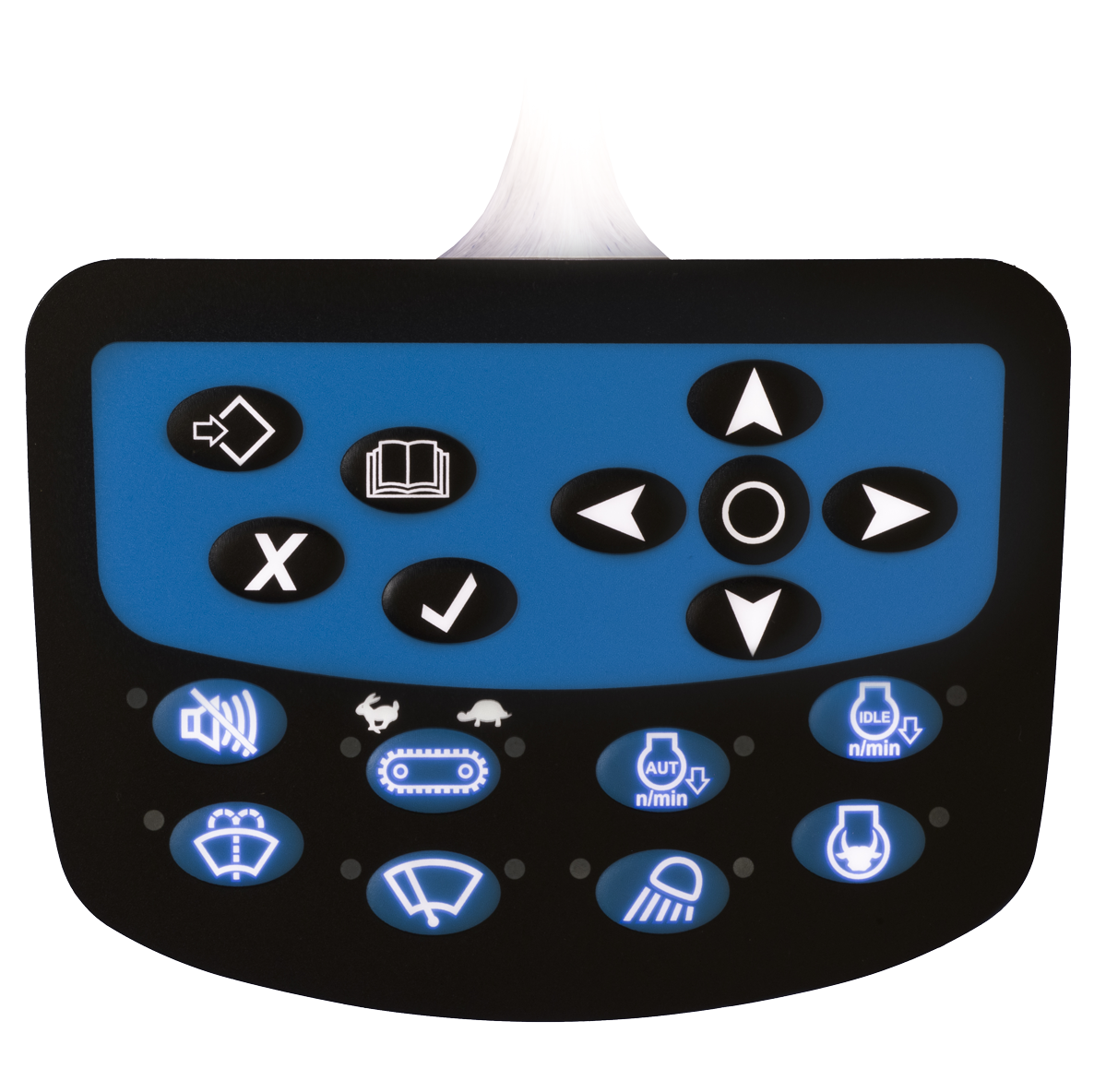Membrane Change Technology: The Key to Reputable and Cost-efficient Interfaces
Membrane switch technology has actually arised as a critical element in the design of individual interfaces, offering both reliability and cost-effectiveness throughout a diverse range of applications. As we check out the multifaceted benefits of membrane switches, their potential for advancement increases questions regarding future applications and advancing trends.
Recognizing Membrane Layer Switch Over Innovation
Membrane button modern technology is an extensively made use of interface option in numerous electronic devices, supplying a seamless mix of functionality and design. This technology integrates multiple layers of products, usually being composed of a visuals overlay, spacer layer, and a circuit layer. The visuals overlay displays the interface aspects, while the spacer layer divides the circuit layer from the overlay up until a user turns on a button.
When pressure is applied to the overlay, the circuit layer finishes the electrical circuit, sending a signal to the tool. This mechanism permits different arrangements, consisting of responsive responses and backlighting choices, enhancing individual communication. Membrane switches are normally made making use of durable materials such as polyester or polycarbonate, guaranteeing longevity and resistance to environmental aspects like moisture and dirt.
The flexibility of membrane layer changes enables their application in varied sectors, consisting of clinical gadgets, consumer electronic devices, and commercial controls. Their portable layout allows for integration into space-constrained environments, providing a reliable interface without endangering aesthetic charm. Understanding the complexities of membrane switch modern technology is necessary for producers and developers looking for to create trusted and effective human-machine interfaces.
Trick Advantages of Membrane Switches
While different user interface remedies exist, membrane changes deal distinct benefits that make them a favored choice in many applications. Among the key benefits is their longevity; membrane layer buttons are designed to hold up against harsh ecological conditions, including dampness, dust, and temperature fluctuations, making certain resilient efficiency. This resilience considerably lowers the requirement for regular substitutes, thereby lowering general upkeep expenses.

Moreover, membrane layer buttons are lightweight and compact, making them suitable for applications where area is limited. Their low-profile design adds to a smooth appearance without endangering performance.
Cost-effectiveness is likewise a significant benefit, as the production procedure for membrane layer changes has a tendency to be less costly compared to conventional mechanical buttons. This affordability, integrated with their dependability and simplicity of setup, positions membrane changes as a useful option for a variety of sectors seeking effective and effective interface.
Applications Throughout Numerous Industries
Just how do membrane layer buttons adapt to the diverse demands of various sectors? Membrane button innovation is increasingly acknowledged for its versatility, making it appropriate for a broad variety of applications throughout multiple industries.
In customer electronics, membrane buttons offer a small solution for remote controls and home appliances, enhancing user experience through user-friendly style. Furthermore, the commercial industry leverages membrane layer switches for equipment control panels, taking advantage of their resistance to extreme environments, such as moisture and dust.
Armed forces and aerospace applications likewise make use of membrane layer switches for their reliability and capability to withstand severe problems, ensuring functional efficiency in important circumstances. In addition, the food and drink industry adopts these buttons for automated systems, where cleanliness and simplicity of procedure are critical. Ultimately, membrane switches are customized to satisfy the unique needs of each industry, verifying their necessary function in modern-day technology interfaces
Design and Modification Options

In the realm of membrane layer switch modern technology, style and modification choices play a crucial duty in improving capability and user interaction. These buttons can be customized to meet certain functional needs and aesthetic preferences, making them versatile elements in various applications.
One of the primary customization read choices is the layout of the switch itself, which can be designed to accommodate special user interfaces and ergonomic factors to consider. By adjusting the shape, dimension, and plan of buttons, suppliers can develop instinctive designs that facilitate simplicity of use. In addition, the incorporation of various shades and visuals overlays permits branding and enhanced exposure, ensuring that users can quickly recognize features.
In addition, membrane buttons can be engineered with different responsive comments devices, such as raised buttons or distinct clicks, to improve the user experience. Different products can likewise be selected for durability and ecological resistance, addressing elements such as dampness, temperature level variations, and chemical check my site direct exposure.
Eventually, the comprehensive layout and personalization options offered in membrane layer button innovation empower businesses to create customized services that not only satisfy practical demands but additionally line up with their branding and operational needs.

Future Patterns in Membrane Buttons
As membrane switch technology continues to develop, future trends are significantly concentrated on improving user experience and integrating sophisticated functionalities. One significant pattern is the integration of touch-sensitive and capacitive innovations into standard membrane buttons. This development allows for even more click reference instinctive interface, providing tactile feedback while keeping a streamlined layout.
An additional arising fad is the usage of eco pleasant products, driven by the growing need for lasting production practices. Suppliers are seeking to reduce their carbon impact by making use of recyclable substratums and low-impact inks, aligning with international sustainability goals.
Furthermore, the rise of the Web of Things (IoT) is motivating the incorporation of wise attributes right into membrane layer switches. Enhanced connectivity choices will allow devices to communicate with each other, permitting seamless combination into more comprehensive systems.
In addition, innovations in printing modern technologies, such as digital printing, are enabling for higher design flexibility and modification. This allows manufacturers to create intricate layouts and dynamic colors cost-effectively.

Conclusion
In final thought, membrane layer button innovation stands for a vital development in customer interface design, using significant benefits in longevity, customization, and cost-effectiveness. As advancements continue to emerge, especially in touch-sensitive interfaces and lasting products, the possibility for membrane layer switches to boost user experience and performance remains appealing.